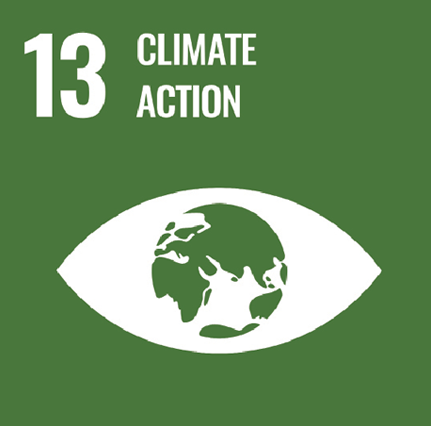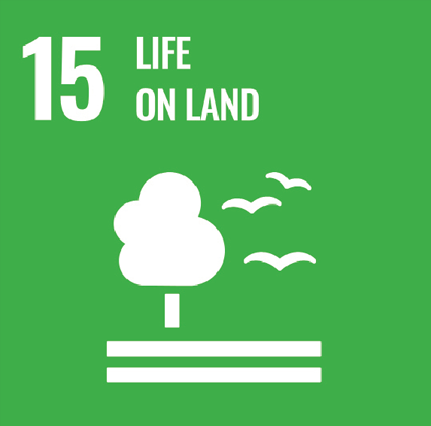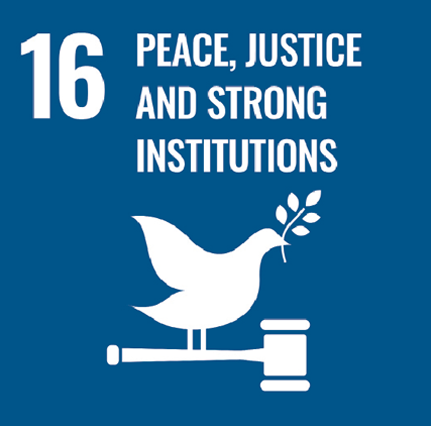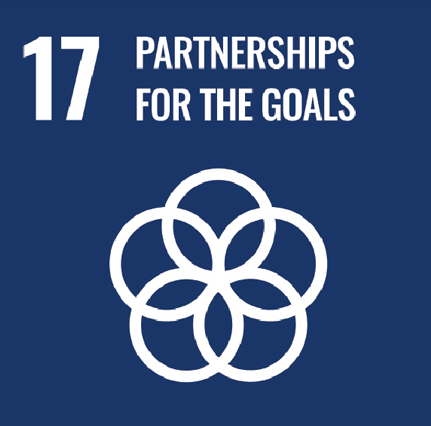Appendix
Electronic Manufacturing Services & Original Design Manufacturing SASB Standard
Response to SASB’s standards on material metrics for the “Electronic Manufacturing Services & Original Design Manufacturing” sector.
SASB Topic |
Accounting Metric |
Category |
Unit of Measure |
Code |
Response and Comments |
Water Management |
(1) a. Total water withdrawn, b. percentage in regions with High or Extremely High Baseline Water Stress (2) a. total water consumed, b. percentage of each in regions with High or Extremely High Baseline Water Stress |
Quantitative |
Thousand cubic meters (m³), Percentage (%) |
TC-ES- 140a.1 |
(1) a. 136.21 thousand cubic meters (1) b. 11-25% (2) a. See narrative response (2) b. 11-25% We entered all of our global facilities into the WRI Aqueduct tool and analyzed the output report in the context of our global operations. We assessed areas as water stressed in terms of quantity and their thresholds for reporting to CDP as those locations with a baseline water stress equal to/greater than ‘High’ (40-80%). Our locations in Mexico and Suzhou, China are considered areas with water stress pursuant to this indicator. (CDP Water Security Questionnaire, W1.2d) 11-25% of our total water withdrawals were from areas with water stress. (CDP Water Security Questionnaire, W1.2d) We do not measure and monitor water consumption at all of our facilities, but our operations generally do not consume water. Accordingly, we consider all of our water withdrawals to be discharged for purposes of our reporting. (CDP Water Security Questionnaire, W1.2b) |
Waste Management |
(1) a. Amount of hazardous waste from manufacturing, b. percentage recycled |
Quantitative |
Metric tons (t), |
TC-ES- 150a.1 |
(1) a. 81.91 metric tons (1) b. See narrative response In 2022, we generated 81.91 metric tons of hazardous waste, using the definitions of “hazardous waste” pursuant to applicable law at each of our facilities. 100% of our hazardous waste was safely recycled or disposed of by third party vendors in accordance with applicable law. We are developing processes for data collection and analysis to determine what meaningful information we can collect from these third party vendors about the disposition of hazardous waste they recycle or dispose of. |
Labor Practices |
(1) Number of work stoppages and (2) total days idle |
Quantitative | Number, Days idle | TC-ES- 310a.1 | (1) 0 work stoppages (2) 0 days idle |
Labor Conditions |
(1) Total recordable incident rate (TRIR) and (2) near miss frequency rate (NMFR) for (a) direct employees and (b) contract employees |
Quantitative | Rate | TC-ES- 320a.1 | (1) 0.26 (2) We do not track NMFR separately for direct employees and contract employees. For comparison purposes, our TRIR in our past three fiscal years (July 1 to June 30) was 0.48 in 2020, 0.27 in 2021, and 0.26 in 2022. |
Percentage of (1) entity’s facilities and (2) Tier 1 supplier facilities audited in the RBA Validated Audit Process (VAP) or equivalent, by (a) all facilities and (b) high-risk facilities |
Quantitative |
Percentage (%) |
TC-ES- 320a.2 |
We do not currently conduct audits using the RBA VAP. However, our facilities, vendors, and suppliers operate under our Code of Conduct, Human Rights Policy, and Global Supplier Manual, which align with the RBA Code of Conduct, including labor, health and safety, environment, ethics, and management systems. We actively monitor and audit internal compliance with our Code of Conduct by conducting thorough due diligence investigations prior to engaging with suppliers or vendors and applying appropriately higher levels of scrutiny where there are traditionally higher risks of compliance violations and/or human rights abuses. We maintain a certification program for suppliers, ensuring that we obtain written acknowledgment of their obligation to comply with all applicable laws, key environmental standards, our Code of Conduct, Global Supplier manual, and our Human Rights Policy. By accepting our Global Supplier Quality Manual, our certified suppliers also commit to allowing us to conduct supply chain audits for safety and compliance, to engage only in legitimate and ethical business and labor practices, and to ensure that their employees, supply chain, and stakeholders understand how to report any actual or suspected misconduct using our ethics hotline. We reserve the right to terminate the certified supplier relationship and/or any contract, withhold payment, and assess fees and/or costs for any noncompliant supplier. |
|
(1) Non-conformance rate with the RBA Validated Audit Process (VAP) or equivalent and (2) associated corrective action rate for (a) priority non-conformances and (b) other nonconformances, broken down for (i) the entity’s facilities and (ii) the entity’s Tier 1 supplier facilities |
Quantitative |
Rate |
TC-ES- 320a.3 |
Please see above for an overview of our detailed audit process. |
|
Product Lifecycle Management |
Weight of end-of-life products and e-waste recovered, percentage recycled |
Quantitative |
Metric tons (t), |
TC-ES- 410a.1 |
Not applicable. Kimball Electronics is a global, multifaceted manufacturing solutions provider. We provide contract electronic manufacturing services and diversified manufacturing services, including engineering and supply chain support, to customers in the automotive, medical, industrial, and public safety end markets. We further offer diversified contract manufacturing services for non-electronic components, medical disposables, precision molded plastics, and production automation, test, and inspection equipment. We do not make our own products—we are the manufacturing/ production service provider for our customers. To understand our business model, please see our Business Overview in our Form 10-K. |
Materials Sourcing |
Description of the management of risks associated with the use of critical materials |
Discussion and Analysis |
N/A |
TC-ES- 440a.1 |
Please see the discussions in our Responsible Sourcing Policy and our 2022 Conflict Minerals Report. |
Activity Metric |
Number of manufacturing facilities |
Quantitative |
Number |
TC-ES- 000.A |
11 |
Area of manufacturing facilities |
Quantitative |
Square feet (ft²) |
TC-ES- 000.B |
1761000 |
|
Number of employees |
Quantitative |
Number |
TC-ES- 000.C |
7970 |
Alignment to the Taskforce on Climate-related Financial Disclosure (TCFD)
Topic |
Disclosure |
Response |
Governance |
a) Describe the board’s oversight of climate-related risks and opportunities |
2022 Proxy, page 14 2022 CDP Climate Change Questionnaire: C1, C1.1, C1.1a, C1.1b, C1.2a, C2.2 2022 CDP Water Security Questionnaire: W6.2, W6.2a, W6.2b, W6.2d, W7.1 |
b) Describe management’s role in assessing and managing climaterelated risks and opportunities |
2022 Proxy, page 14 2022 CDP Climate Change Questionnaire: C1.2, C1.2a, C2.2, C2.2a 2022 CDP Water Security Questionnaire: W1.4, W1.4c, W3.3, W3.3a, W3.3b, W6.3, W7.1 |
|
Strategy |
a) Describe the climate-related risks and opportunities the organization has identified over the short, medium, and long term |
2022 10-K, pages 15 - 17 2022 CDP Climate Change Questionnaire: C2.1, C2.1a, C2.2a, C2.3, C2.3a, C2.4, C2.4a 2022 CDP Water Security Questionnaire: W4.1, W4.1a, W4.1b, W4.1c, W4.2, W4.2c, W4.3, W4.3a |
b) Describe the impact of climate-related risks and opportunities on the organization’s businesses, strategy, and financial planning |
2022 10-K, pages 15 - 17 2022 CDP Climate Change Questionnaire: C2.1, C2.2a, C2.3a, C2.4, C2.4a, C3.1, C3.2, C3.2a, C3.2b, C3.3, C3.4 2022 CDP Water Security Questionnaire: W4.1b, W4.1c, W4.2, W4.3, W4.3a |
|
c) Describe the resilience of the organization’s strategy, taking into consideration different climate-related scenarios, including a 2°C or lower scenario |
2022 CDP Climate Change Questionnaire: C2.1, C3.1, C3.2, C3.2a, C3.2b, C3.3 2022 CDP Water Security Questionnaire: W3.3b, W4.2 |
|
Risk Management |
a) Describe the organization’s processes for identifying and assessing climate-related risks |
2022 Proxy, page 14 2022 10-K, pages 15 - 17 2022 CDP Climate Change Questionnaire: C1.1a, C1.1b, C1.2, C1.2a, C2.1, C2.1a, C2.1b, C2.2, C2.2a, C3.2a 2022 CDP Water Security Questionnaire: W1.4, W1.4c, W3.3, W3.3a, W3.3b, W6.2, W6.2a, W6.2b, W6.2d, W6.3 |
b) Describe the organization’s processes for managing climate-related risks |
2022 Proxy, page 14 2022 10-K, pages 15 - 17 2022 CDP Climate Change Questionnaire: C1.1b, C1.2, C2.1, C2.1a, C2.1b, C2.2, C2.2a, C3.2a 2022 CDP Water Security Questionnaire: W1.4, W1.4c, W3.3, W3.3a, W3.3b |
|
c) Describe how processes for identifying, assessing, and managing climate-related risks are integrated into the organization’s overall risk management |
2022 CDP Climate Change Questionnaire: C2.1, C2.1a, C2.1b, C2.2, C2.2a, C3.2a, C3.2b 2022 CDP Water Security Questionnaire: W3.3a, W3.3b |
|
Metrics and Targets |
a) Disclose the metrics used by the organization to assess climate-related risks and opportunities in line with its strategy and risk management process |
2022 CDP Climate Change Questionnaire: C4.1, C4.1a, C4.1b, C4.2, C4.2b, C4.3, C4.3a, C4.3b, CDP C7.9,C 7.9a, C8.2a, C8.2g, C9, C9.1 2022 CDP Water Security Questionnaire: W1.2, W1.2b, W1.2d, W1.2h, W1.2i, W1.2j, W1.3, W4.1b, W4.1c, W4.2, W5.1, W8.1, W8.1a, W8.1b |
b) Disclose Scope 1, Scope 2, and, if appropriate, Scope 3 greenhouse gas (GHG) emissions, and the related risks |
2022 CDP Climate Change Questionnaire: C6.1, C6.3, C6.5, C6.5a, C6.10, C7.1, C7.2, C7.3, C7.3b, C7.5, C7.6, C7.6b, C7.9a |
|
c) Describe the targets used by the organization to manage climate-related risks and opportunities and performance against targets |
2022 CDP Climate Change Questionnaire: C4.1, C4.1a, C4.1b, C4.2, C4.2b, C9.1 |
Alignment to the UN Sustainable Development Goals (SDGs)
Alignment to the 10 UN Global Compact Principles (UNGC)
UN Global Compact Principles |
How We Align |
| Human Rights | |
Principle 1: Businesses should support and respect the protection of internationally proclaimed human rights; |
Global Human Rights Policy (page 1) |
Principle 2: make sure that they are not complicit in human rights abuses. |
Global Human Rights Policy (pages 2-3) |
| Labor | |
Principle 3: Businesses should uphold the freedom of association and the effective recognition of the right to collective bargaining; |
Global Human Rights Policy (page 3) |
Principle 4: the elimination of all forms of forced and compulsory labour; |
Global Human Rights Policy (pages 2-3) |
Principle 5: the effective abolition of child labour; and |
Global Human Rights Policy (pages 2-3) |
Principle 6: the elimination of discrimination in respect of employment and occupation. |
|
| Environment | |
Principle 7: Businesses should support a precautionary approach to environmental challenges; |
|
Principle 8: undertake initiatives to promote greater environmental responsibility; and |
|
Principle 9: encourage the development and diffusion of environmentally friendly technologies. |
|
| Anti-Corruption | |
Principle 10: Businesses should work against corruption in all its forms, including extortion and bribery. |
|





